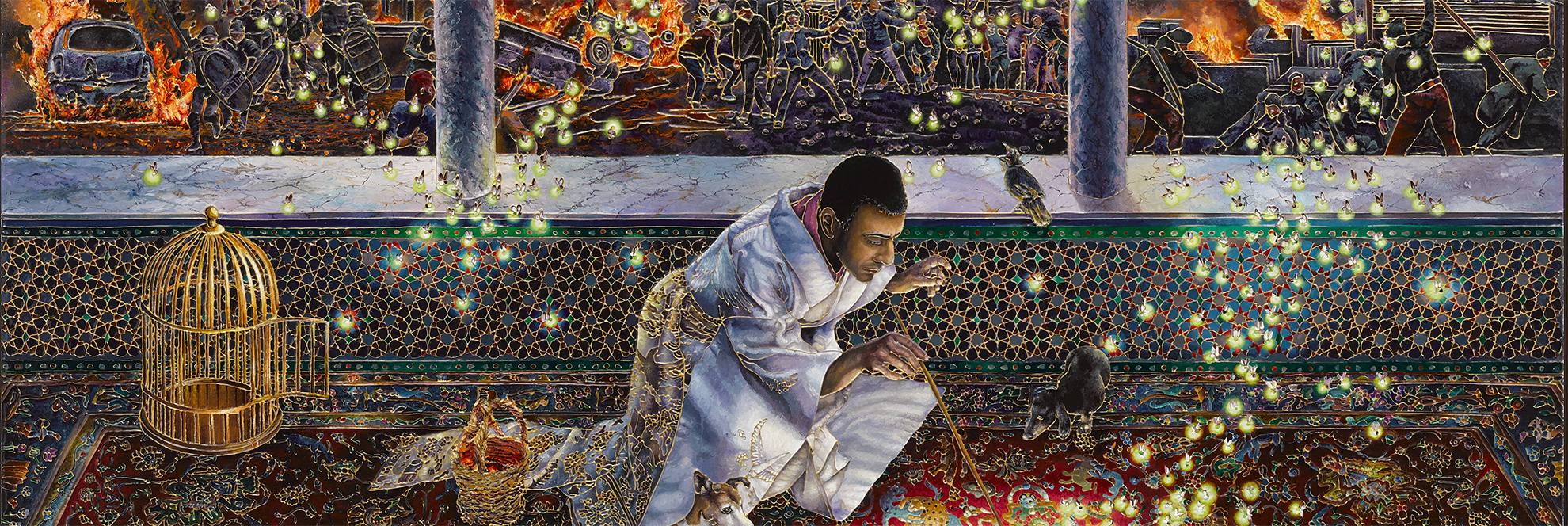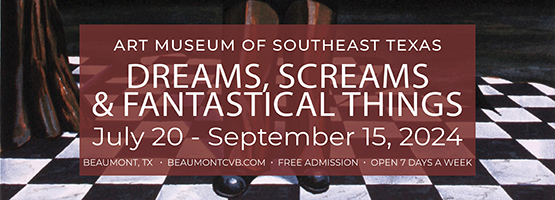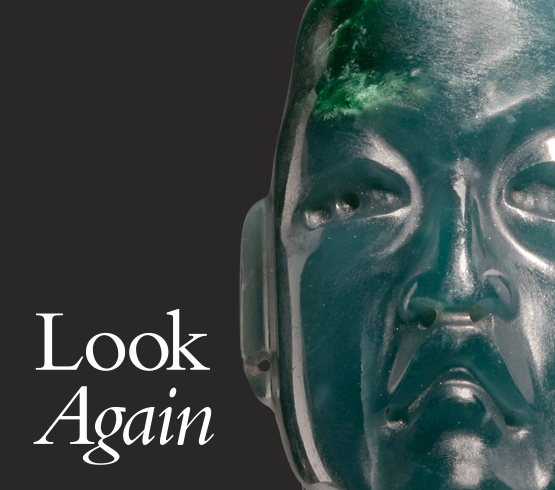Imagine peering into a gallery so grand it fills your view. Every surface is covered with artworks depicting elaborate, colorful landscapes, mythical creatures, and faceted details with surfaces so rich they seem to be lit from within. A central figure in this gallery stands atop a wooden crate labeled “fragile,” triumphant and regal in his stance, holding a toilet plunger overhead as though it were a scepter. Looking through the depths of the room reveals an outside world of darkness, flames, and chaos.
Raqib Shaw: Ballads of East and West, on view at the Museum of Fine Arts, Houston June 9 through Sept. 2, features works like the one described above, each painting ornately blending Eastern and Western influences, depicting hope and despair. Initiated by the Frist Art Museum, Nashville, and the Isabella Stewart Gardner Museum, Boston, the exhibition’s Houston iteration is organized by MFAH Isabel Brown Wilson Curator Modern & Contemporary Art Alison de Lima Greene and Curatorial Associate Katie O’Hara. The touring show will travel to the Huntington Library, Art Museum, and Botanical Gardens in California.
Shaw was born in Kolkata, India, in 1974, where he was influenced by Buddhist, Hindu, Muslim, and Christian cultures. His intricate, colorful works read like visual diaries of his childhood memories growing up in the Valley of Kashmir.
“There’s a sense of craft that animates Shaw’s work. When he was nineteen, his family sent him to London to learn the family business. He went to the National Gallery for the first time—a visit during which he had an in-depth encounter with the history of Western art—and he fell in love with Renaissance paintings,” says Greene.
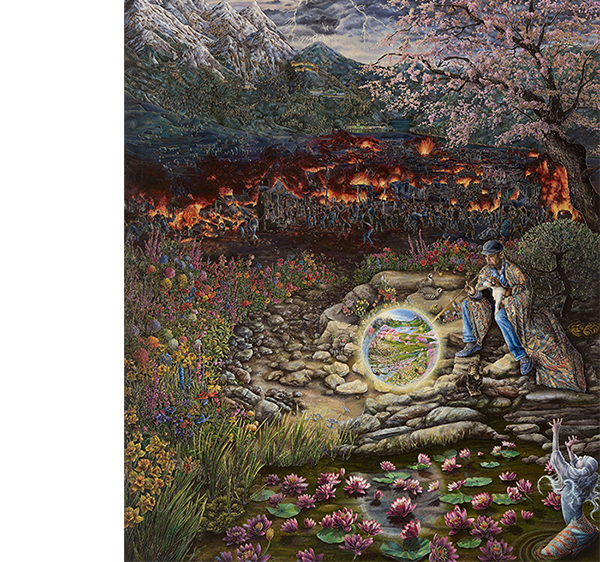
1 ⁄5
Raqib Shaw, La Tempesta (After Giorgione), 2019–21, acrylic line and enamel on birchwood, private collection. © Raqib Shaw / Photo © White Cube (Theo Christelis), courtesy of the artist and White Cube.
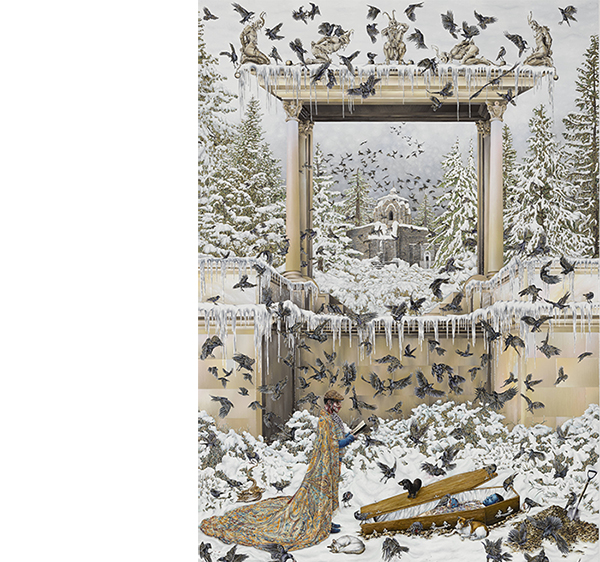
2 ⁄5
Raqib Shaw, Last Rites of the Artist’s Ego at Shankryacharya Temple (after Ludovico Mazzolino), 2015–16, acrylic liner and enamel on birchwood, private collection. © Raqib Shaw / Photo © White Cube (Ben Westoby), courtesy of the artist and White Cube
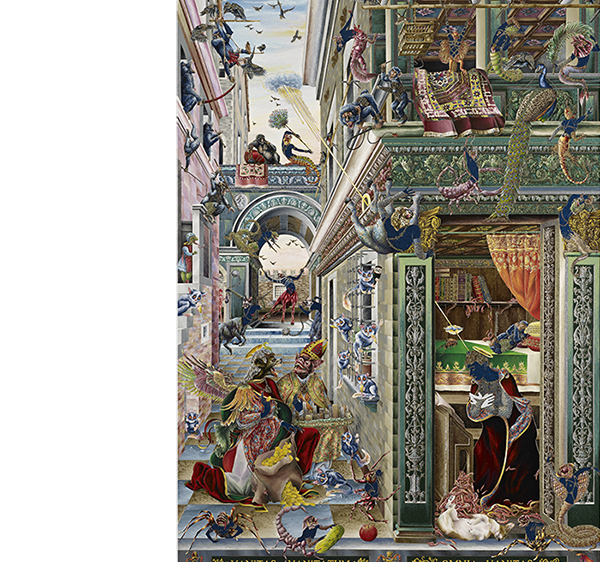
3 ⁄5
The Annunciation (after Carlo Crivelli), 2013–14, acrylic liner, glitter, enamel, and rhinestones on birchwood, private collection, courtesy of White Cube London. © Raqib Shaw / Photo © Raqib Shaw (Prudence Cuming Associates Ltd), courtesy of the artist and White Cube
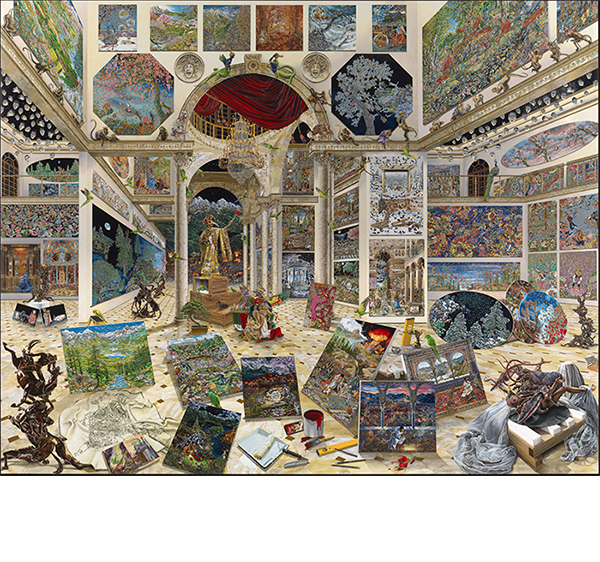
4 ⁄5
Raqib Shaw, The Retrospective 2002–22, 2015–22, acrylic liner, enamel, and rhinestones on aluminum, private collection, London. © Raqib Shaw / Photo © White Cube (Todd-White Art Photography), courtesy of the artist and White Cube
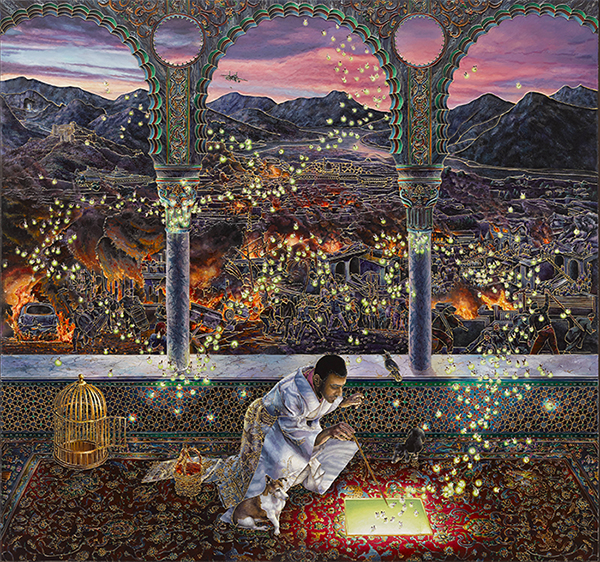
5 ⁄5
Raqib Shaw, Ode to the Country without a Post Office, 2019–20, acrylic liner and enamel on birchwood, private collection. © Raqib Shaw / Photo © White Cube (Ollie Hammick), courtesy of the artist and White Cube
To achieve his now signature level of intricate and ornate detail, Shaw found a modern day equivalent to traditional cloisonné techniques, hallmarks of decorative arts in both Buddhist and Islamic cultures. He uses porcupine quills and needles to apply enamel paint, outlined in embossed gold.
The surfaces of Shaw’s paintings shimmer with jewels, glitter, and semiprecious stones, highlighting the conflict present in almost every work, evoking Kashmir’s turbulent history and ongoing conflict as well as global ecological crisis.
According to the MFAH, “Subverting geographical boundaries, Shaw blurs the lines between art and ornament—Japanese aesthetics, Mughal artifacts, Islamic textiles, and Indo-Persian architecture converge with citations from Renaissance masters.”
Ballads of East and West pushes beyond immediate assumptions of opposition. The duality of hope and despair echoed in the exhibition’s title, which comes from Rudyard Kipling’s poem of the same name, spurs us to consider a time when such divisions fall away. Here, Shaw pictures a spirit of reconciliation that spans the globe.
—NANCY ZASTUDIL

